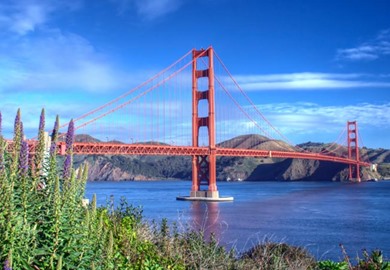Holiday ideas for San Francisco

 (48 reviews)
(48 reviews)Until the late 18th century the area now known as San Francisco was inhabited by the Ohlone Indians. But they vanished almost immediately when, in 1776, Spanish missionaries began a mission in the region in an effort to introduce Catholicism. They named it for St Francis of Assisi - hence 'San Francisco'. The village passed, along with the rest of California, into the possession of Mexico in 1821, and in 1846 it finally became part of the United States.
The California Gold Rush began just two years later, and within another year fifty-thousand people had moved there to seek their fortune, transforming the village and its surrounding wasteland of sand dunes into a prosperous town. San Francisco, by now a city, entered a golden age at around the turn of the 20th century, though this was sadly cut short by the devastating 1906 earthquake - in which about 80% of the city was levelled. However, it was quickly rebuilt and a new, magnificent city arose.
Find out more with a free brochure and enjoy weekly travel inspiration and offers in our e-newsletter.
Holiday ideas for San Francisco

 (48 reviews)
(48 reviews)